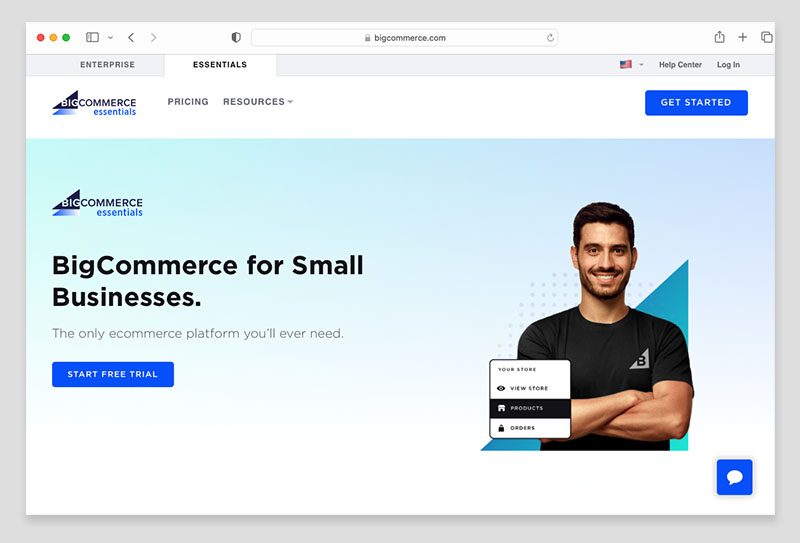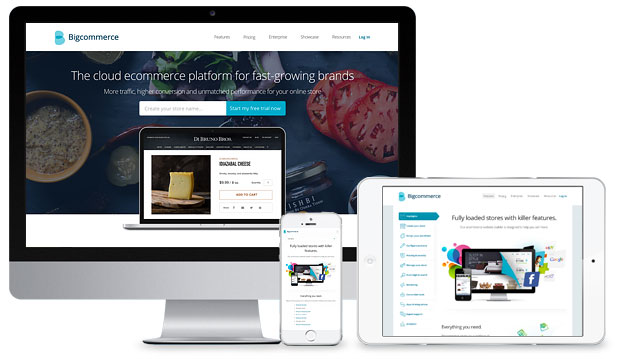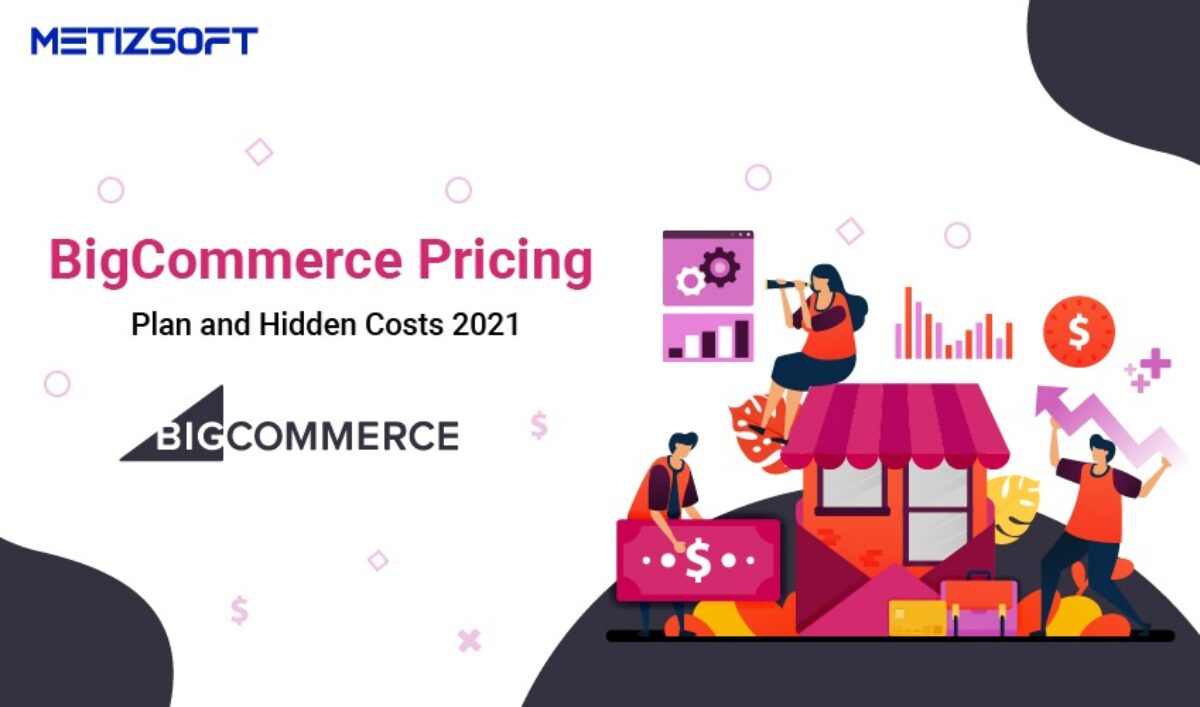
Overview of BigCommerce
Introduction to BigCommerce
BigCommerce has emerged as a top contender in the e-commerce space, particularly for growing businesses seeking to establish a robust online presence without the headaches often associated with building an online store from scratch. This user-friendly platform offers an intuitive interface and a wealth of features that cater to merchants of all sizes. Whether you’re a startup or an established business looking to expand, BigCommerce delivers the tools needed to thrive in the competitive world of e-commerce.
History and Background
Founded in 2009 by Eddie Machaalani and Mitchell Harper, BigCommerce began as a simple e-commerce solution aimed at small and medium-sized businesses. Over the years, it has evolved, expanding its services and features to include robust marketing tools and customization options. This growth reflects a deep understanding of the e-commerce landscape and the needs of its users.
As of now, BigCommerce powers thousands of online stores and has raised significant funding to enhance its platform continuously. Notably, its commitment to innovation has positioned it as a preferred choice for merchants who want to take their businesses to new heights.
Key Features of BigCommerce
BigCommerce stands out for several reasons, including:
- User-friendly Interface: The easy navigation makes it accessible for users of all skill levels.
- Responsive Design: Mobile-ready templates ensure a seamless shopping experience.
- SEO Tools: Built-in features help improve search rankings and drive organic traffic.
- Multi-channel Selling: Integration with platforms like Amazon and eBay enables broader reach.
- Customization Options: Advanced users can access HTML/CSS for personalized branding.
By blending power with flexibility, BigCommerce serves as a dynamic e-commerce platform for growing businesses, making it an attractive choice for entrepreneurs ready to take their ventures online. This powerful solution meets the demands of today’s online marketplace while providing ample room for future growth.

Setting up an E-commerce Store on BigCommerce
Creating an Account on BigCommerce
Getting started with BigCommerce is straightforward and user-friendly. You begin by visiting their website and signing up for a free trial, which allows you to explore the platform without any commitment. Key steps include:
- Providing Basic Information: Enter your name, email, and a password.
- Store Name and Address: Choose a name that reflects your brand and complete your business details.
- Customized Recommendations: BigCommerce will tailor suggestions based on your preferences and needs.
Once you’ve completed these steps, you’ll have your account set up and ready for the next phase.
Choosing a Theme and Customizing Your Store
With your account in place, it’s time to give your store a personality. BigCommerce offers a variety of professionally designed themes, catering to different industries. Personal anecdotes often emphasize the importance of first impressions—an appealing theme can captivate visitors.
- Select a Theme: Browse through free and paid options that best represent your brand.
- Customize Your Store: Use the drag-and-drop interface to adjust colors, fonts, and layout.
This step makes your store uniquely yours and creates a seamless shopping experience for customers.
Adding Products and Managing Inventory
Now comes the exciting part—adding your products!
- Product Details: Input vital information such as product images, descriptions, and pricing.
- Inventory Management: BigCommerce offers robust tools to track inventory levels, ensuring you never oversell.
The simplicity of uploading products can save time and effort, allowing you to focus more on marketing and customer engagement.
Integrating Payment Gateways and Shipping Options
To finalize your setup, integrate payment gateways and establish shipping options:
- Payment Gateways: BigCommerce supports multiple options like PayPal, Stripe, and Authorize.net, so your customers can check out easily.
- Shipping Settings: Configure shipping rates and methods that suit your business model, whether it’s flat-rate or real-time quotes.
By systematically completing these steps, you’ll establish a solid foundation for your e-commerce store on BigCommerce, paving the way for a successful online venture.

Marketing and Promoting Your Store on BigCommerce
Utilizing SEO Tools and Strategies
Once your e-commerce store is live on BigCommerce, it’s time to attract visitors. One of the most efficient ways to do this is through Search Engine Optimization (SEO). BigCommerce provides built-in SEO tools, allowing you to:
- Optimize Product Pages: Use relevant keywords in titles, descriptions, and meta tags to improve visibility.
- Create SEO-Friendly URLs: Customize URLs for easier crawling by search engines.
- Utilize Blog Features: Start a blog on your site to share valuable content, engage customers, and boost your organic traffic.
In my experience, implementing these strategies not only increases search engine rankings but also drives targeted traffic to your store, ultimately leading to higher sales.
Running Email Marketing Campaigns
Email marketing remains one of the most effective ways to engage with customers. BigCommerce seamlessly integrates with various email marketing tools like Mailchimp and Klaviyo, making it easier to:
- Build Email Lists: Collect customer emails during checkout or via promotional offers.
- Send Targeted Campaigns: Create personalized campaigns based on customer behavior or preferences.
- Monitor Results: Track open rates and conversions to optimize future campaigns.
A well-curated email list can be a goldmine for sales, as my personal experience shows that retaining existing customers through targeted emails is often less costly than acquiring new ones.
Implementing Social Media Marketing Tactics
Social media is crucial for promoting your online store. Allocate time to establish a presence on platforms like Facebook, Instagram, and Pinterest. Here are key tactics:
- Create Engaging Content: Share product images, promotions, and user-generated content to connect with your audience.
- Run Paid Ads: Use targeted ads to reach new customers based on their interests and behavior.
- Engage with Followers: Respond to comments and messages to build relationships and trust.
Seeing customer interactions grow through social media has been a rewarding experience, often leading to referrals and increased traffic.
Using Analytics to Track Performance and Make Improvements
Lastly, never underestimate the power of analytics. BigCommerce offers built-in reporting tools to track various metrics, such as:
- Sales Performance: Identify your best-selling products and categories.
- Traffic Sources: Determine where your visitors are coming from, be it organic, paid, or social.
- Customer Behavior: Analyze engagement patterns to adjust your marketing strategy accordingly.
By regularly reviewing analytics, you can make informed decisions, refine your marketing tactics, and ultimately drive growth. In my journey, leveraging analytics has proven invaluable for continuous improvement and achieving sustainable success in e-commerce on BigCommerce.

Managing Your E-commerce Business on BigCommerce
Order and Customer Management
Once your e-commerce store starts generating sales, effective order and customer management become crucial. BigCommerce provides robust tools to simplify these processes. You can easily:
- Track Orders: Monitor the status of orders from placement to delivery, ensuring timely fulfillment.
- Handle Customer Queries: Use integrated features to respond to customer inquiries and manage their account information seamlessly.
- Automate Notifications: Set up automatic email notifications for customers regarding order confirmations and shipping updates.
In my experience, efficient order management builds customer trust and loyalty, which can translate into repeat business.
Understanding Analytics and Reporting
Understanding your store’s performance through analytics and reporting is essential for making informed decisions. BigCommerce offers insightful reports that cover:
- Sales Trends: Get a clear picture of sales performance over different periods.
- Customer Behavior: Analyze how visitors interact with your site and identify popular products.
- Traffic Sources: Discover how customers are finding your store, whether through search engines, ads, or referrals.
I’ve found that regularly reviewing analytics can reveal trends or issues that allow for timely pivoting in strategies.
Scaling Your Business with BigCommerce
Scaling your e-commerce business is a thrilling journey, and BigCommerce can facilitate that growth. Consider these strategies:
- Expand Product Lines: Introduce new products or services based on market demand.
- Increase Marketing Efforts: Utilize new channels or methods for promotion, leveraging the marketing tools within BigCommerce.
- Optimize for Mobile: Ensure your store is mobile-friendly, as mobile commerce continues to grow.
The flexibility of BigCommerce allows businesses to adapt and expand quickly, which I realized firsthand when diversifying my product offerings led to noticeable growth.
Utilizing Apps and Extensions for Additional Functionality
To enhance the capabilities of your store, consider integrating various apps and extensions available on BigCommerce. Benefits include:
- Improved Marketing Tools: Add apps that help with SEO, email marketing, or social media integration.
- Inventory Management Solutions: Use tools that streamline inventory tracking to avoid stockouts or overstock situations.
- Customer Service Enhancements: Implement chatbots or helpdesk solutions to improve customer support.
My own exploration of available apps has led to discovering invaluable tools that simplified various operations, allowing me to focus more on strategic growth rather than day-to-day management.
By effectively managing these components of your e-commerce business, you position yourself for sustainable success on the BigCommerce platform.

Customer Support and Resources
BigCommerce Customer Support Options
When running an e-commerce store, having reliable customer support can make all the difference. BigCommerce offers a variety of support options to ensure you’re never alone on your journey. These include:
- 24/7 Support: Access assistance via phone, live chat, or email at any hour, making it convenient for businesses operating in different time zones.
- Help Center: A comprehensive library filled with articles addressing common issues, troubleshooting tips, and guides about using the platform effectively.
- Priority Support: For businesses on higher-tier plans, access to priority support allows for quicker issue resolution—a critical advantage during peak sales periods.
Personally, I’ve found having 24/7 support reassuring, especially when my store faced technical hiccups during a major sale.
Community Forums and Resources for Assistance
In addition to direct support, BigCommerce has cultivated a vibrant community where users can share insights, experiences, and solutions. The community forums serve as an invaluable resource:
- Peer Support: Connect with other BigCommerce users who can offer advice based on their experiences.
- Feature Requests: Engage with the BigCommerce team for suggestions on future platform enhancements, ensuring users’ voices are heard.
- Success Stories: Learn from fellow merchants’ successes and mistakes to better navigate your own e-commerce journey.
The sense of camaraderie I’ve experienced in these forums has often provided me with unique insights that conventional support channels might miss.
Training and Educational Materials Provided by BigCommerce
BigCommerce goes the extra mile by offering a wealth of training and educational resources. These materials are designed to empower users to get the most out of the platform:
- Webinars and Tutorials: Regularly conducted sessions covering everything from basic setup to advanced marketing strategies.
- Certification Programs: For those looking to dive deeper, BigCommerce provides certification courses that enhance your skill set and industry knowledge.
- Resource Library: Articles and how-to guides that cover a multitude of e-commerce topics, keeping you informed about best practices.
Having invested time in these resources, I can attest to the significant difference educational materials have made in my understanding of e-commerce strategies, helping me to make better decisions for my business.
Overall, BigCommerce’s commitment to customer support, community engagement, and educational resources equips users with the necessary tools to navigate their e-commerce journeys successfully.

Pricing Plans and Considerations
Overview of BigCommerce Pricing Options
When considering an e-commerce platform like BigCommerce, understanding its pricing options is crucial for making an informed decision. BigCommerce offers several plans tailored to different business needs:
- Standard Plan: Suitable for startups, this plan includes essential features to get your store up and running.
- Plus Plan: Best for growing businesses, it includes more advanced marketing tools and support for customer segmentation.
- Pro Plan: Aimed at established businesses, this plan offers additional reporting and analytics features.
- Enterprise Plan: For larger organizations with robust needs, this custom solution provides dedicated support and advanced functionalities.
I remember when I first started; I opted for the Standard Plan. It provided just what I needed to launch my store without overwhelming me with features I wouldn’t use.
Factors to Consider When Choosing a Plan
Selecting the right plan isn’t just about the initial costs; several factors come into play:
- Business Size: Your current number of products and projected growth can dictate which plan fits best.
- Required Features: Identify which features are crucial for your operations, such as analytics, product options, or customer support.
- Budget Constraints: Ensure the plan you choose aligns with your financial capabilities while meeting your business needs.
By assessing these factors, you can avoid common pitfalls such as overpaying for features you won’t utilize.
Comparing BigCommerce Pricing with Other E-commerce Platforms
When comparing BigCommerce pricing with other e-commerce platforms, it becomes clear why many entrepreneurs are drawn to it. While tools like Shopify and WooCommerce have their merits, BigCommerce offers a competitive pricing structure without sacrificing features.
- For example, Shopify’s basic plan may offer fewer features at a similar price.
- WooCommerce might appear cheaper, but additional costs for hosting, security, and plugin functionalities can quickly add up.
In my own venture, using BigCommerce provided more value for my investment, enhancing my store without breaking the bank. It’s essential to conduct thorough comparisons based on your unique business requirements and projected growth.
Overall, understanding pricing plans and making informed comparisons is a vital step that can significantly impact your e-commerce success on BigCommerce.

